Unveiling Victorian Wedding Traditions
There’s a wedding on the horizon in Miss Scarlet Season 5! But what did nuptials look like back then? What trends did Victorians embrace that still make their way down the aisle and which did we send packing? From serpent engagement rings to three wedding cakes, not to mention tossing rice, we unveil some surprising history behind why couples do what they do when tying the knot.
- 1.
Women Said “Yes” to Diamond Rings

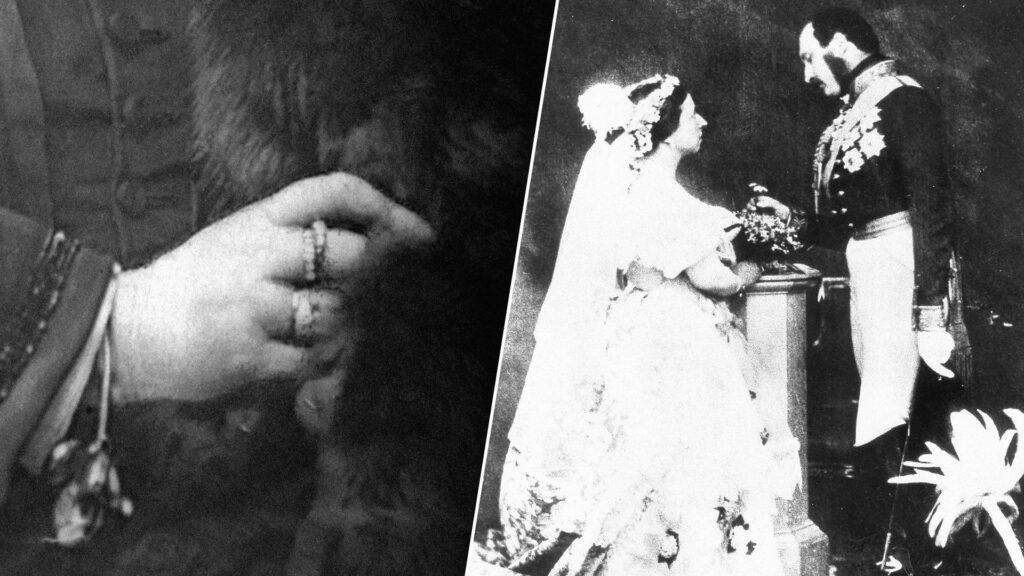
Close up of Queen Victoria’s right hand with the Emerald Snake Ring (second finger down). Right: Victoria and Albert in a re-enactment of their marriage ceremony, 1854. Victorians knew how to make a proposal sparkle—literally! Their engagement rings were all about diamonds, often paired with gems like amethyst, emerald, or pearl. The go-to band was a warm rose or yellow gold. California’s 1849 Gold Rush and the 1866 discovery of South African diamond mines made these precious materials more accessible. And when Prince Albert proposed to Queen Victoria with a gold ring shaped like a snake, (symbolizing eternal love), the “serpent ring” became a must-have for brides-to-be.
- 2.
White Becomes the Ultimate Wedding Trend

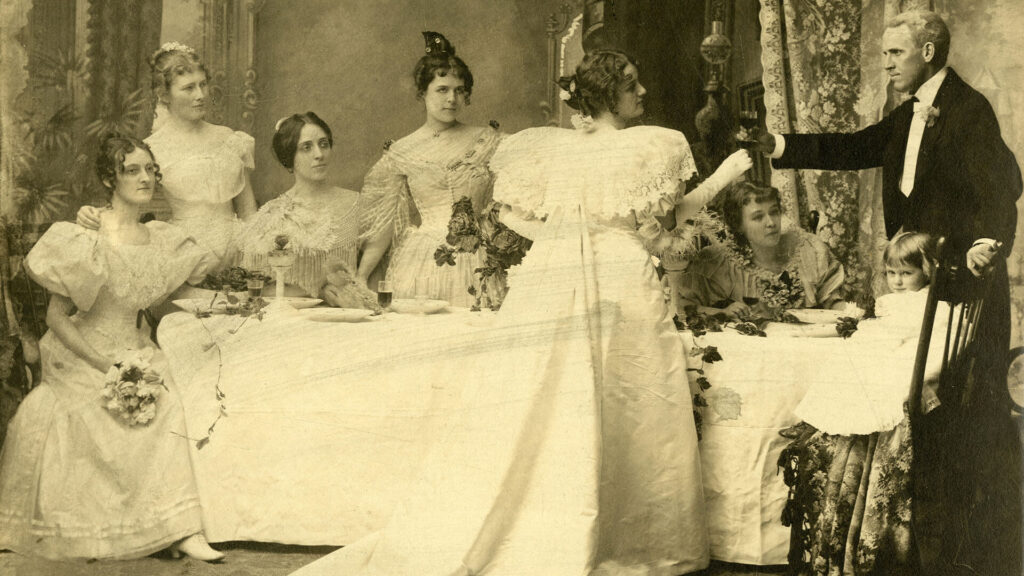
Antique c1890 photograph of a Victorian wedding party with bride, groom, bridesmaids, and flower girl. The white wedding gown became a thing after Queen Victoria wore hers in 1840. Soon wedding schemes were mostly white with only pops of accent colors. Even bridesmaids got in on the act with white gowns and veils, though it was important their dresses be practical enough to wear again later.
The superstitious rhyme “Something old, something blue, something borrowed, something new” also crept into bridal fashion at this time. The history of its symbolism gets tricky, though it’s widely suggested the items were meant to ward off evil and protect the bride from a curse of infertility. (In short, not an excuse to borrow a friend’s fancy shoes for the big day!)
- 3.
The Wedding Ceremony: Saying I Do Before Noon

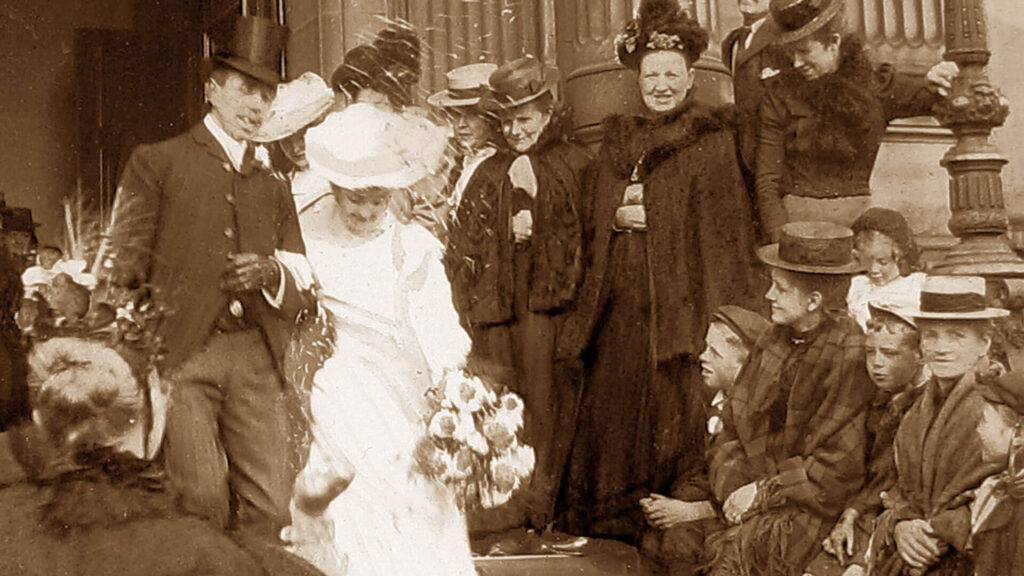
Victorian weddings were usually held in church, sometimes in a home parlor, and always early—certainly no later than 3pm! The venue was decorated with flowers and petals scattered the aisle, a tradition that’s still with us. Another enduring custom is the music played at nuptials. Queen Victoria’s eldest daughter shook the wedding world by choosing both Wagner’s “Here Comes the Bride” and Mendelssohn’s “Wedding March” with its happy trumpet call for her 1858 wedding.
Wedding bands were not exchanged since only the bride wore one. As the newlyweds recessed, their focus was kept straight ahead. No casting a sideways glance since acknowledging guests was quite bad form. Perhaps in retaliation, guests then showered the couple in rice, grain or birdseed as they approached their wedding carriage.
- 4.
Receptions were Standing Room Only

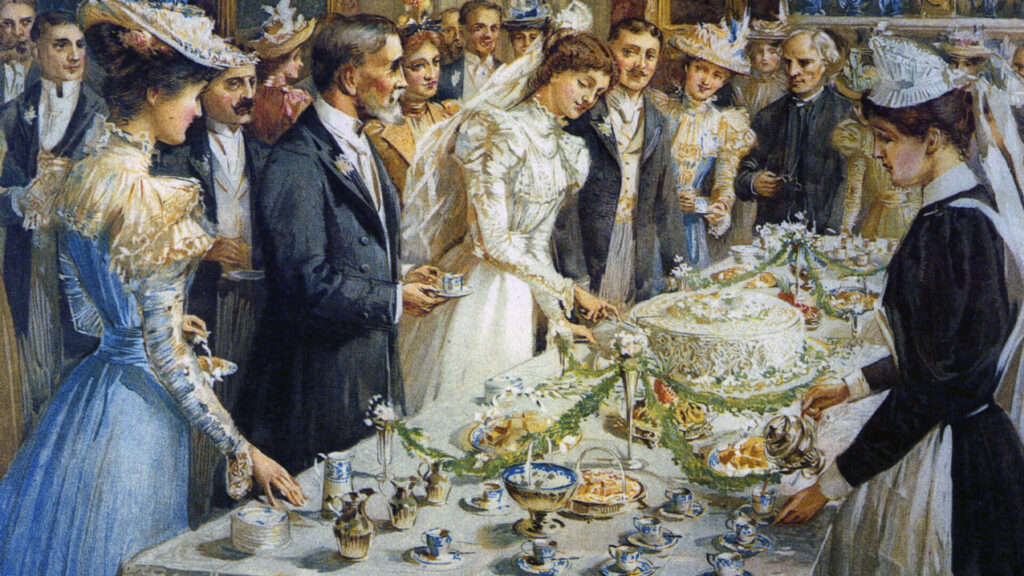
Receptions usually featured a breakfast since couples wed bright and early. Guests were received by the newlyweds and tradition called for them to greet the bride first (unless they only knew the groom). While brides are always the star of the show, only the groom got the congrats. While everyone else stood to eat, the wedding party sat and enjoyed the meal like royalty.
Three different cakes were made: typically a fruitcake for guests, plus a light and dark cake for bride and groom, often with favors baked inside. Guests left with cake slices boxed up, but not from the bride’s cake—hers was saved to eat on the couple’s 25th anniversary. Because who doesn’t love cake after a quarter century?
- 5.
“Bridal Tour” Morphs into “Honeymoon”

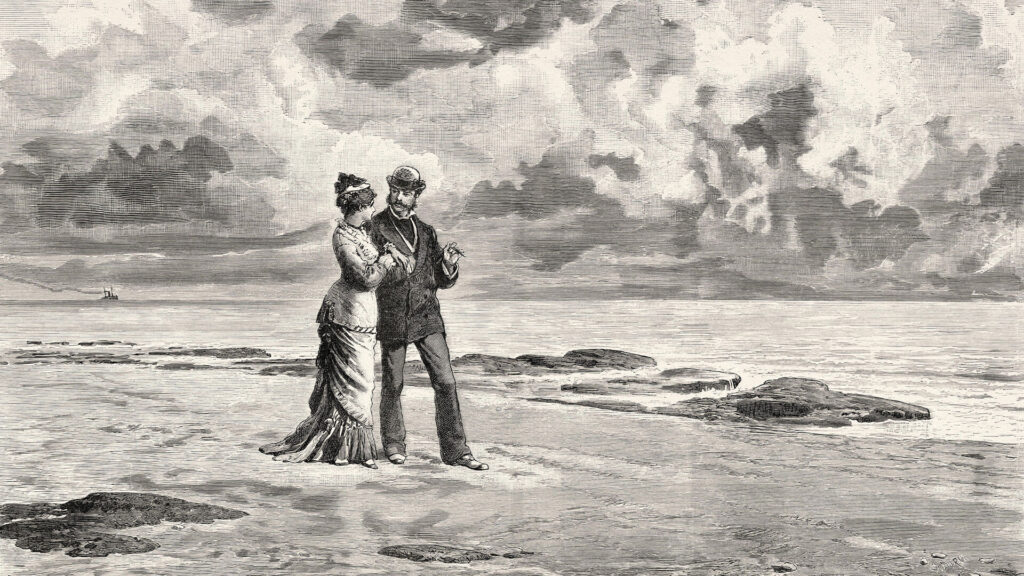
Victorian newlyweds embarked on what were called “bridal tours,” which weren’t romantic so much as practical. Couples visited friends and relatives who couldn’t attend the wedding, and the bride was introduced to her new family and social circle. In the early 1800s, a chaperone might tag along to help the young woman ease into her married life. It wasn’t until the later railway travel boom that society gradually shifted toward the concept of “honeymoon” being a dedicated period for more private and romantic escape—often to the English seaside.



















